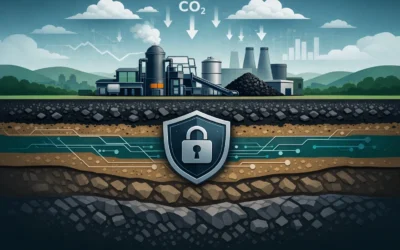In the era of climate urgency, innovative solutions like plant-based direct air capture to biochar are not only reshaping carbon offset strategies but also navigating the intricate web of global legislation. Dynamic Carbon Credits is at the forefront, leveraging nature’s potential to meet regulatory demands and drive sustainable change.
As the planet grapples with the escalating threats of climate change, corporations are under intense pressure to reduce their carbon footprints. Carbon credits have emerged as a vital mechanism for achieving these sustainability goals, but the path is anything but straightforward. The legislative landscape surrounding carbon credits is evolving rapidly, presenting both opportunities and challenges for forward-thinking companies. Enter Dynamic Carbon Credits—a pioneer in plant-based direct air capture (DAC) to biochar, offering a unique and compliant pathway for Fortune 500 companies to navigate this complex terrain.
A Environmental Legislative Journey: Past and Present
Kyoto to Paris: The Foundation of Carbon Legislation
The genesis of carbon credit legislation traces back to the Kyoto Protocol of 1997, which introduced binding emission reduction targets for industrialized nations. This landmark agreement established Certified Emission Reductions (CERs), allowing companies to offset their emissions by investing in sustainable projects internationally. However, Kyoto’s rigid structure often limited participation to larger, more developed nations.
The Paris Agreement of 2015 transformed the approach by emphasizing nationally determined contributions (NDCs). This shift towards flexibility encouraged a broader range of countries and industries to engage in carbon offset initiatives. The Paris Agreement’s inclusive framework paved the way for diverse and innovative strategies, such as plant-based direct air capture, to gain traction in the carbon credit market.
The Inflation Reduction Act (IRA) of 2022: A Catalyst for Change
In the United States, the Inflation Reduction Act of 2022 marked a pivotal advancement in carbon credit legislation. By expanding and refining the IRS 45Q tax credits, the IRA incentivized businesses to adopt carbon capture and utilization (CCU) technologies. Key provisions include:
- Extended Eligibility Period: Projects can claim tax credits through 2033, providing long-term financial certainty.
- Broadened Applicant Base: Lowered capture thresholds make it easier for a wider range of companies to participate.
- Enhanced Direct Pay Options: Tax-exempt entities can directly receive payments, broadening the beneficiary pool.
State-Level Innovations: California’s Green Leadership
While federal legislation sets the overarching framework, states like California have been at the forefront of pioneering carbon credit programs. The California Cap-and-Trade Program, for instance, establishes stringent emission caps and facilitates a robust trading system for carbon allowances. Similarly, the Regional Greenhouse Gas Initiative (RGGI) in the Northeastern states fosters a competitive market for carbon credits, complementing federal efforts and creating a multi-layered regulatory environment that companies must adeptly navigate.
Plant-Based Direct Air Capture to Biochar: A Legislative Compliant Solution
Harnessing Nature’s Potential for Carbon Sequestration
Dynamic Carbon Credits specializes in plant-based direct air capture (DAC) to biochar—a method that aligns seamlessly with current and pending legislation. Unlike traditional geological storage, which involves capturing CO₂ and storing it underground, plant-based DAC utilizes biomass to absorb carbon directly from the atmosphere. This approach not only sequesters carbon but also enhances soil health and agricultural productivity through the production of biochar.
Biochar: The Dual-Edged Sword
Biochar is a stable form of carbon produced by pyrolyzing biomass, which can be subsequently integrated into soils to improve fertility and water retention. This dual benefit ensures that carbon sequestration efforts contribute to both environmental sustainability and agricultural resilience. By converting captured CO₂ into biochar, Dynamic Carbon Credits creates a closed-loop system that amplifies the impact of each ton of carbon captured, adhering to stringent legislative requirements.
Decoding Additionality: Ensuring Credible Carbon Credits
What is Additionality?
Additionality is a fundamental principle in carbon credit certification, ensuring that the emission reductions achieved are beyond what would have occurred under a “business-as-usual” scenario. This criterion is essential for maintaining the integrity and effectiveness of carbon credit markets.
Plant-Based Direct Air Capture to Biochar: A Legislative Compliant Solution
Harnessing Proprietary Plant Technologies for Carbon Sequestration Dynamic Carbon Credits specializes in plant-based direct air capture (DAC) to biochar—a method that aligns seamlessly with current and pending legislation. Central to this process is the cultivation of a proprietary plant species designed for optimal carbon absorption. Our verified process ensures that each step, from planting to biochar conversion, adheres to stringent legislative and environmental standards. Verified Growth and Soil Enhancement
- Proprietary Plant Cultivation: Utilizing our exclusive plant species, Dynamic Carbon Credits maximizes carbon uptake from the atmosphere. These plants are engineered for high biomass yield and efficient carbon sequestration.
- Comprehensive Soil Testing: Before and after the growth cycle, we conduct thorough soil analyses to measure improvements in soil health and verify carbon capture. This data-driven approach ensures transparency and compliance with carbon credit certification requirements.
From Harvest to Biochar: Transforming Biomass into Sustainable Solutions
- Biomass Harvesting: Once the proprietary plants reach maturity, they are harvested and prepared for conversion. This biomass is then subjected to pyrolysis—a process that transforms organic material into biochar.
- Biochar Conversion: The harvested biomass is converted into biochar through a controlled pyrolysis process, resulting in a stable form of carbon that can be sustainably stored and utilized.
- Proprietary Bacterial Treatment: Our biochar is treated with a proprietary bacteria strain that enhances its benefits for agriculture. This treatment not only improves soil fertility and water retention but also ensures that the biochar contributes positively to agricultural ecosystems.
Accurate Carbon Calculation and Documentation
- Carbon Capture Calculations: We perform meticulous calculations to quantify the amount of carbon captured from each field. These calculations are based on robust scientific methodologies, ensuring accuracy and reliability.
- Comprehensive Documentation: Every aspect of the carbon capture process is thoroughly documented, providing transparent and verifiable records that support our carbon credit claims. This documentation is essential for regulatory compliance and third-party verification.
Dynamic Carbon Credits’ Approach to Additionality
Dynamic Carbon Credits employs a robust methodology to ensure additionality through its plant-based DAC to biochar process:
Technological Innovation and Improvement
- Advanced Biomass Utilization: By deploying cutting-edge technologies to convert biomass into biochar, Dynamic Carbon Credits ensures that the carbon capture process exceeds conventional methods, delivering verifiable emission reductions.
- Scalable Solutions: The scalability of plant-based DAC to biochar allows for continuous improvement and expansion, demonstrating genuine additional environmental benefits.
Financial Viability Through Carbon Credit Revenue
- Essential Revenue Streams: Comprehensive financial modeling demonstrates that the revenue from carbon credits is critical for the project’s initiation and sustainability. Without these incentives, the investment in plant-based DAC technologies and biochar production would not be economically feasible.
- Bridging Financial Gaps: Detailed cost-benefit analyses highlight how carbon credit income covers operational and capital expenses, ensuring that projects are sustainable and attractive to investors.
Compliance with Regulatory Standards
- Meticulous Documentation: Every step of the carbon capture and biochar production process is thoroughly documented, ensuring transparency and accountability. This meticulous record-keeping supports the additionality claim by providing concrete evidence of genuine emission reductions.
- Third-Party Verification: Independent audits and verifications authenticate the additionality of the projects, reinforcing the credibility of the carbon credits issued.
Lifetime Emission Reductions
- Persistent Carbon Sequestration: Biochar provides a stable form of carbon storage, ensuring that the sequestered carbon remains locked away from the atmosphere for extended periods. This permanence is crucial for additionality, guaranteeing long-term environmental benefits.
- Enhanced Agricultural Practices: Integrating biochar into soil not only sequesters carbon but also improves soil fertility and water retention, creating a synergy that enhances the overall impact of the carbon credit project.
Dynamic Carbon Credits’ Compliance Strategy
Meeting Capture Requirements
- Thresholds: For plant-based DAC projects, capturing a minimum of 500 metric tons of CO₂ annually qualifies for the credit.
- Continuous Monitoring: Implementing real-time monitoring systems ensures that capture quantities are accurately tracked and reported.
Optimizing Credit Eligibility
- Biochar Integration: Utilizing captured CO₂ to produce biochar aligns with IRS 45Q requirements, representing a tangible and beneficial use of sequestered carbon.
- Compliance Documentation: Adhering to EPA-approved Monitoring, Reporting, and Verification (MRV) plans ensures that all IRS criteria are seamlessly met.
Streamlined Reporting Processes
- Automated Data Collection: Leveraging technology for automated data collection minimizes administrative burdens and enhances reporting accuracy.
- Accredited Verifiers: Engaging with accredited third-party verifiers ensures that all capture and utilization claims are authenticated, maintaining compliance with IRS standards.
The Financial Upside: Sustainable Investments with Tangible Returns
While the primary goal of carbon credits is environmental stewardship, the financial incentives provided by IRS 45Q tax credits significantly enhance the economic viability of carbon capture projects. By transforming captured CO₂ into biochar, Dynamic Carbon Credits not only sequesters carbon but also creates valuable agricultural products, offering dual revenue streams and maximizing return on investment for corporate stakeholders.
Looking Forward: Navigating a Sustainable Tomorrow
As carbon credit legislation continues to evolve, Dynamic Carbon Credits remains at the forefront, anticipating regulatory changes and adapting strategies to maintain compliance and effectiveness. By focusing exclusively on plant-based direct air capture to biochar, the company sets a benchmark for sustainable and credible carbon offset solutions.
In a world where every metric ton counts, Dynamic Carbon Credits harnesses nature’s potential to create lasting environmental and financial benefits. For Fortune 500 companies seeking to lead in sustainability, partnering with Dynamic Carbon Credits offers a pathway to not only meet regulatory requirements but also to champion innovative and impactful climate solutions.
Ready to Elevate Your Carbon Strategy?
Connect with Dynamic Carbon Credits today to discover how our plant-based direct air capture solutions can propel your company toward a sustainable and profitable future. Let’s transform carbon into a catalyst for change, one biochar unit at a time.





